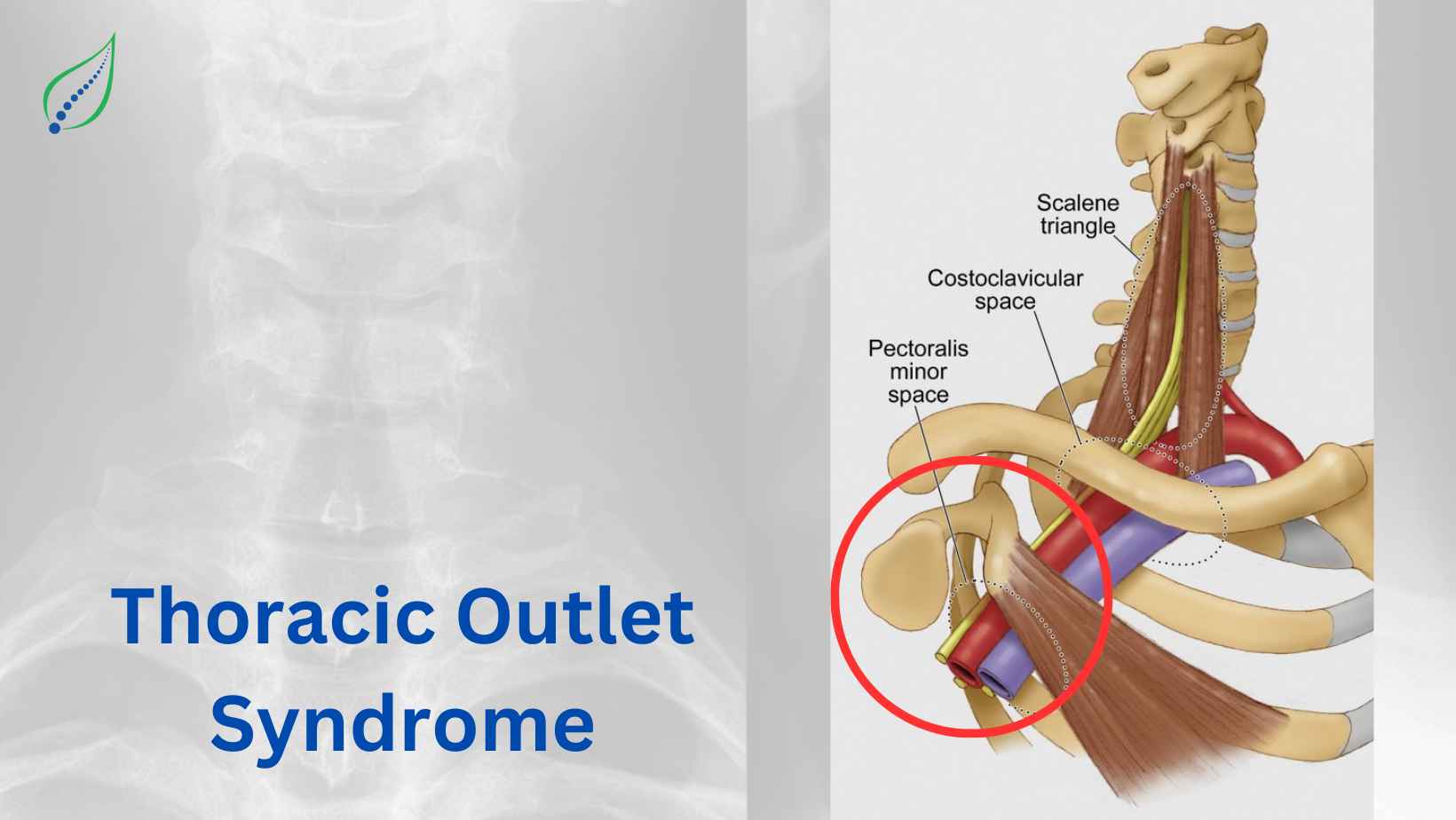Thoracic Outlet Syndrome
The thoracic outlet is the area between the top rib and collarbone which is a passageway for several nerves and blood vessels. When these neurovascular structures get compressed, it can lead to thoracic outlet syndrome. This syndrome has further been categorized into 2 types the neurological type which encompasses the nerves and the vascular type which includes veins and arteries.
Causes of TOS
There are multiple causes that can lead to TOS and older females are at a higher risk of developing this syndrome than men due to anatomical causes such as a lower sternum, less advanced muscles, and a narrower thoracic outlet. Certain congenital conditions are also responsible for the development of this syndrome such as an extra rib or cervical rib. Other than these, accidents and physical trauma to the body can also lead to this syndrome. Having a poor posture, performing repetitive motion tasks, fractures are some other potential causes that can cause Thoracic outlet syndrome.
Symptoms of TOS
- Mild to severe pain in the neck and upper limbs, depending upon the location and extent of compression of the neurovascular structure involved.
- In the case of neurologic thoracic outlet syndrome, which is characterized by the compression of the brachial plexus, the patient might experience numbness in the shoulder, arms, and hands.
- Discoloration or blotchy skin, especially in the hands.
- Numbness and weakness, resulting in loss of gripping power.
- Swelling and fatigue in the arms and hands.
- A throbbing sensation in the neck region.
Diagnosis of TOS
Diagnosis of this syndrome is quite difficult and requires a thorough medical check-up. Your doctor will go through your past medical records and conduct a physical exam to confirm the symptoms. Some external signs which indicate this Syndrome are swelling near the collarbone, a depression in the shoulder, and difficulty in making certain movements of the arms and the head. To further eliminate the overlapping symptoms of other conditions, your doctor will perform certain tests such as Elevated Arm Stress Test, Adson’s Test, Wright’s Test, and Upper Limb Tension Tests.
The doctor might also recommend imaging tests such as ultrasound, X-ray, CT scan, MRI, Arteriography, and Venography to get a clearer picture of the compressed vein or artery and determine the kind and severity of TOS.
Treatment for TOS
The treatment options for TOS depend upon the severity and how late your condition is diagnosed. In the early stages, conservative treatment is mostly preferred due to its high success rate as well as the least invasive approach. Your doctor will prescribe you over-the-counter anti-inflammatory drugs to ease the pain and swelling. He/She might also prescribe you medication for treating the blood clots that can form in case of a severely compressed vein or artery. These medications are known as thrombolytics and work by thinning the blood to dissolve the blood clots. To prevent reforming of clots anticoagulants will also be prescribed.
Medications along with physical therapy are one of the quickest ways of recovery in this condition. Stretching and mild exercises will help in opening up the thoracic outlet to relieve the compressed nerves, veins, or arteries. Physical therapy will also help in regaining the lost strength and increase your range of motion, enabling you to perform activities that TOS might have hindered. Moreover, maintaining a good posture is one of the preventive measures and should be practiced as a lifestyle change to help the body in the recovery process and prevent further injuries.

_1746449195_1751827240.png)


